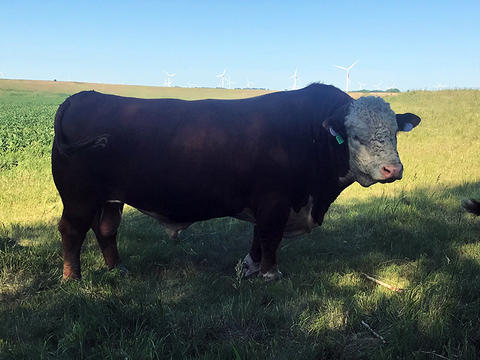



Handling bulls safely
Handling livestock in a safe manner is crucial on any farm to prevent accidents, injuries, and fatalities. Large livestock especially pose a threat to our safety. Bulls are some of the most dangerous animals on the farm..jpeg) According to the U.S. Department of Labor Census of Fatal Occupational Injuries and the Surveillance of Occupational Injuries and Illnesses databases, bulls caused 48% of cattle-related fatalities.
According to the U.S. Department of Labor Census of Fatal Occupational Injuries and the Surveillance of Occupational Injuries and Illnesses databases, bulls caused 48% of cattle-related fatalities.
Bulls account for only 2% of cattle nationwide. They are large, filled with adrenaline and testosterone, and can inflict injury in seconds either intentionally or by accident.
While dairy bulls are often considered more aggressive and dangerous than beef bulls, the advice in this article applies to both dairy and beef producers.
Keep bulls off the farm
The best way to avoid the dangers associated with bulls is to keep bulls off the farm premises.
- Artificial insemination allows for on-time breeding while reducing the risk to people and cows.
- Leasing bulls represents a potential biosecurity risk but could limit how many days your operation has a bull on the farm.
If a bull is kept on the farm, follow strict safety practices.
- Extra precautions should be taken to ensure bulls do not escape, such as checking your fences more often or reinforcing pens.
- Never allow children to work with a bull.
- If you are moving the bull, do so under calm conditions and always have an escape plan.
When visiting someone else’s farm, ask if they have a bull on-site. Many dangerous situations are created by simply not knowing there is a bull on the farm. If you have a bull on your farm, tell visitors there is a bull on-site and where he is located.

Bull aggression
It is important to remember that even "nice" bulls that were bottle-fed as calves can get more aggressive with age.
- Bulls don’t need to have a history of aggression—an attack can happen at any time, to anyone, with any bull.
- Be constantly vigilant whenever there is a bull around.
- Pay attention to the bull’s body language—they will turn broadside to present their size and power—and watch for signs of aggression such as pawing at the ground.
- Never turn your back on a bull, even if you think it’s not paying attention to you.
- Bulls can and will attack unprovoked.
No one should ever completely trust a bull due to the possibility of an attack, but just as important is situational awareness to prevent accidental injury from working with these immense animals.
- Bulls, just like all cattle, are prey species.
- When scared, bulls can unintentionally hurt humans working with them due to their size and strength.
- With a casual toss of its head, a bull can send a gate hurtling back at the cattle handler.
- A running bull brushing the handler can cause serious injury.
- When multiple bulls are in the same area, especially if they are not familiar with each other, there is the potential for a confrontation between the bulls.
- Fighting bulls do not care what is in their way. Equipment, fences, fence posts, buildings, and people are all at risk of damage.
Keep calm
Proper low-stress cattle handling can prevent many bull-related human injuries. Calm, clear and unthreatening direction for the bulls will prevent activation of the fight or flight response.
- Before entering the bull’s pen or pasture, have an escape plan.
- Calmly and as quietly as possible make sure the bull knows you are there—surprising a bull is a bad idea.
- Pairing the bull with a cow or other cattle when moving them can keep them calmer especially if the bull is not used to the working facility, the people, or being handled.
- Read How to properly handle cattle and other farm animals for more information on low-stress handling.



